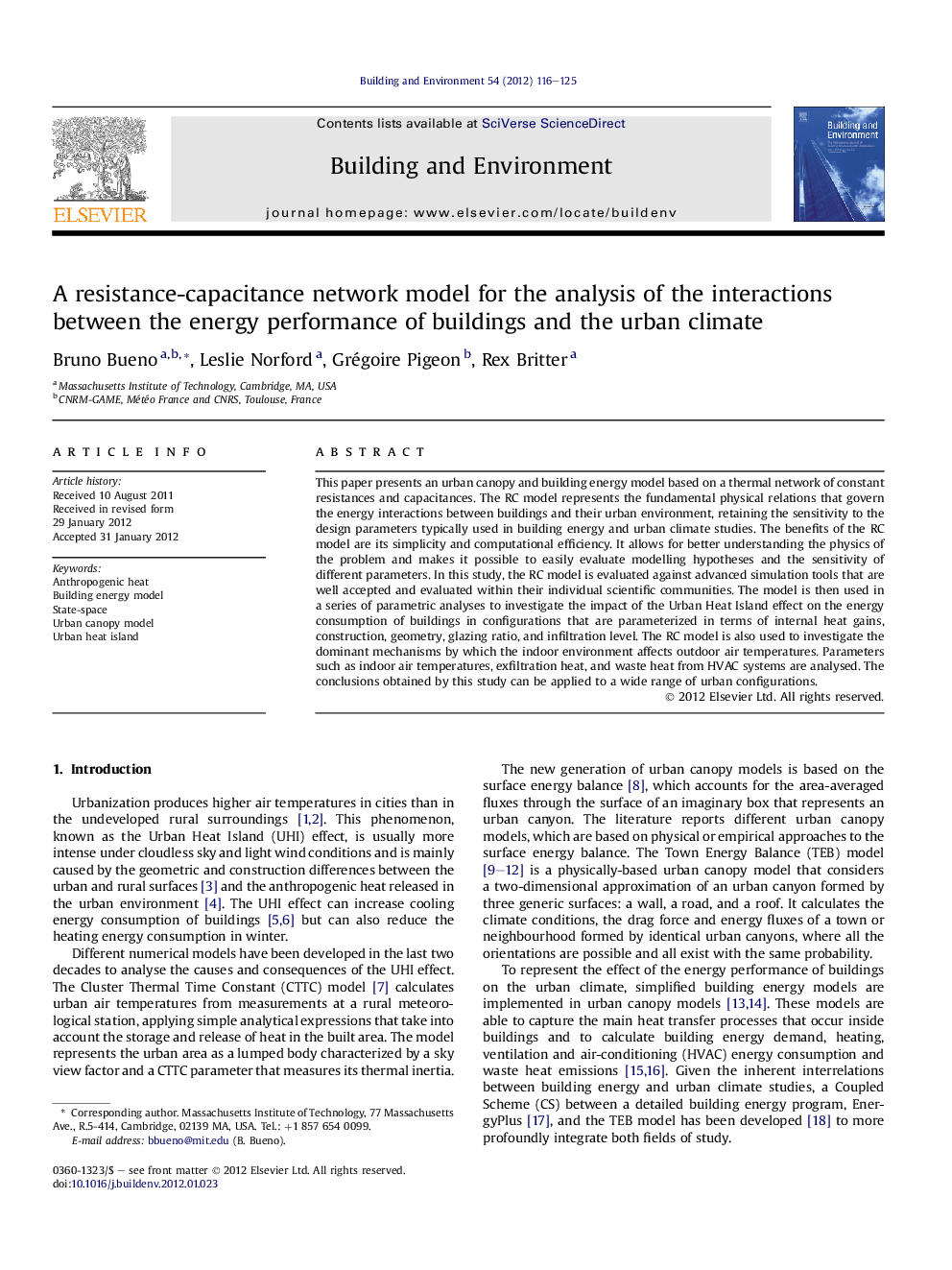| Article ID | Journal | Published Year | Pages | File Type |
|---|---|---|---|---|
| 248572 | Building and Environment | 2012 | 10 Pages |
This paper presents an urban canopy and building energy model based on a thermal network of constant resistances and capacitances. The RC model represents the fundamental physical relations that govern the energy interactions between buildings and their urban environment, retaining the sensitivity to the design parameters typically used in building energy and urban climate studies. The benefits of the RC model are its simplicity and computational efficiency. It allows for better understanding the physics of the problem and makes it possible to easily evaluate modelling hypotheses and the sensitivity of different parameters. In this study, the RC model is evaluated against advanced simulation tools that are well accepted and evaluated within their individual scientific communities. The model is then used in a series of parametric analyses to investigate the impact of the Urban Heat Island effect on the energy consumption of buildings in configurations that are parameterized in terms of internal heat gains, construction, geometry, glazing ratio, and infiltration level. The RC model is also used to investigate the dominant mechanisms by which the indoor environment affects outdoor air temperatures. Parameters such as indoor air temperatures, exfiltration heat, and waste heat from HVAC systems are analysed. The conclusions obtained by this study can be applied to a wide range of urban configurations.
► An urban canopy and building energy model based on a RC thermal network. ► We investigate the interactions between buildings and the urban climate. ► 5% increase in energy demand per 1 K increase in maximum UHI effect. ► The urban climate influences buildings mainly through infiltration and ventilation. ► Buildings influence the urban climate mainly through the waste heat from air-conditioning systems.
